You worked hard to make your backyard an inviting oasis with lush green grass and beautiful flowers, and the gophers have noticed! These uninvited guests can wreak havoc on your lawn and garden. Learn how to get rid of gophers with these effective strategies and natural control methods.
Signs of Gophers in Your Yard
The telltale gopher mound of fresh dirt is often the first sign that you have unwanted visitors in your backyard, but it isn’t always easy to tell if you have a gopher or a mole. The first step to getting rid of gophers is learning how to identify gopher mounds and tunnels.
Identifying Gopher Mounds and Tunnels
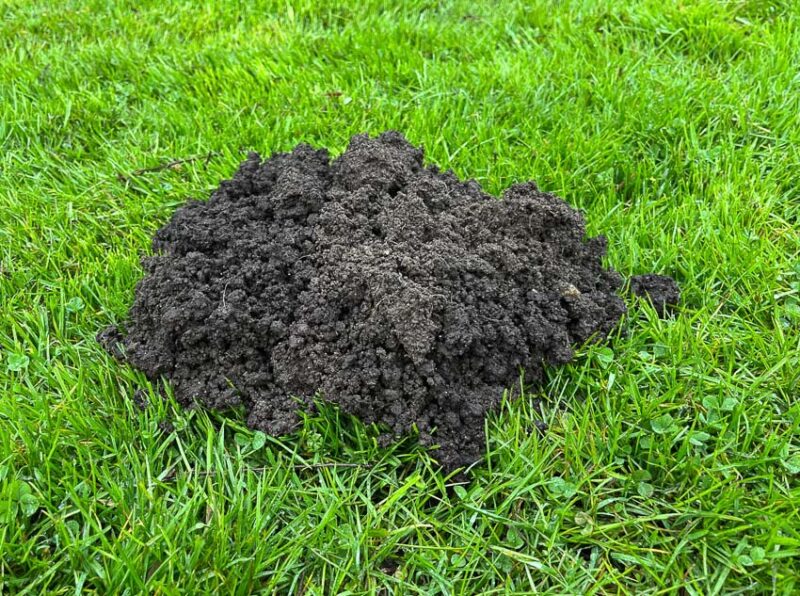
Gophers are challenging to control, but they aren’t the only small burrowing animal that can damage your lawn and garden. Moles and voles are also prevalent, and knowing your target pest is important to determine the best control strategy.
- Gophers create crescent or fan-shaped mounds. They quickly plug any opening into their tunnels.
- Cone or volcano-shaped mounds indicate the presence of moles. They are insectivorous, and they mostly leave your plants alone.
- A network of surface tunnels or a clean golf-ball-sized hole indicates a vole. Voles don’t dig as much as gophers and moles, but they cause significant damage to plants and trees.
If you find a fresh gopher mound, probe the soil to locate the main tunnel. Gopher tunnels are usually about 4 to 18 inches below the surface. You can easily find the main tunnel by probing about 8 to 12 inches away from a gopher mound.
Recognizing Gopher Damage in Your Yard
Once established, gophers burrow throughout your yard. They create an extensive underground system of tunnels and burrows, with a main tunnel that has several lateral branches.
Tunnels are typically about three inches wide, and you may see fresh mounds of dirt all over your yard from one industrious gopher.
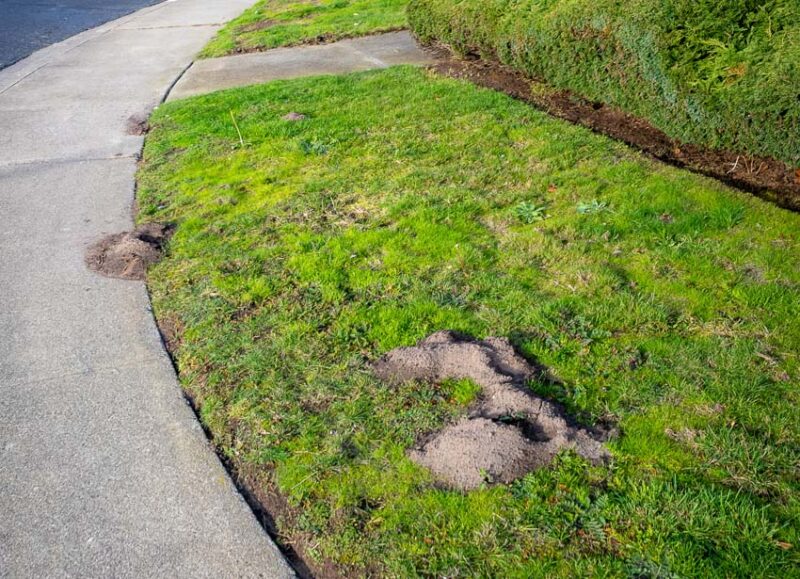
Another sign of gopher damage is gnawed and displaced plants and vegetables. Gophers don’t frequently leave their underground tunnel system, so most feeding happens underneath the ground.
You may notice small plants have completely disappeared as they are pulled down into the tunnel from below, leaving only a hole.
Gophers will feel more comfortable leaving their tunnels in areas with thick vegetation and may forage for food in your vegetable garden. If you notice chew marks on your fruits and vegetables, it’s another sign that you have a gopher.
How to Get Rid of Gophers: Natural Methods
Getting rid of gophers requires persistence because they can be challenging to eradicate. On how to get rid of gophers naturally is by using an integrated pest management approach that combines natural and traditional control methods.
How to Get Rid of Gophers with Underground Barriers and Fencing
Exclusion is an effective strategy in all types of pest control and does not harm animals. With gopher wire, you can protect individual plants, your entire garden, and even your whole lawn.
What is Gopher Wire?
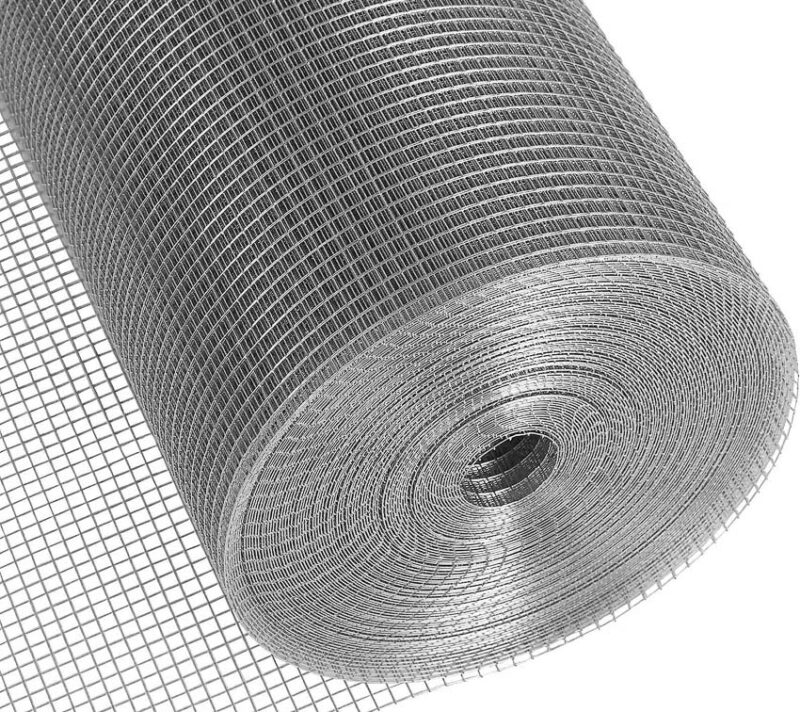
Gopher wire , made to be installed underground, is the best way to get rid of gophers in your yard. Made of stainless steel or galvanized metal, it’s similar to chicken wire, but most chicken wire will degrade underground after a few years.
Gopher Baskets
To install gopher wire for individual plants, purchase gopher baskets. They are available in several sizes, including 1, 2, and 5 gallons. Then, when you plant your garden or flower bed, dig a hole large enough to bury the basket, tuck the plant’s root ball inside, and fill it with dirt.
Perimeter Fence
You can use gopher wire as a perimeter fence for your whole garden.
Dig a trench at least 24 inches deep, and bury the gopher wire. Ensure the wire is six inches above the ground, or tie it to your above-ground fence.
You can also bend it outwards at the bottom to discourage gophers even more.
If you have access to old metal roofing, you can upcycle it and use it the same way. Fold over the edges with a pair of pliers so there aren’t any sharp edges.
Raised Bed Fences
If you’re installing raised beds, it’s the perfect opportunity to use gopher fencing. Before you fill your raised beds with garden soil, staple gopher fencing to the bottom and attach it securely because it only takes one small opening.
Indeed, gophers have nothing to do but figure out how to get to your delicious vegetables.
Gopher Fences for Lawns
Installing gopher wire on your lawn is a lot of work and a significant investment, but it is an effective strategy. Considering all the time, money, and energy you put into having a beautiful lawn, it’s worth it if gophers are getting you down.
To install gopher wire on your lawn, remove the sod. If you plan on reusing it, roll it up and keep it moist. Remove about 2 inches of topsoil, then roll out the gopher wire.
If you install it too deep, the gophers will tunnel between the wire and the surface.
Overlap the sections of the wire by at least 4 inches, keeping it in place with landscape staples. Then, place a one to two-inch layer of topsoil over the wire, and replant your lawn with sod or grass seed.
How to Get Rid of Gophers with Natural Repellents and Deterrents
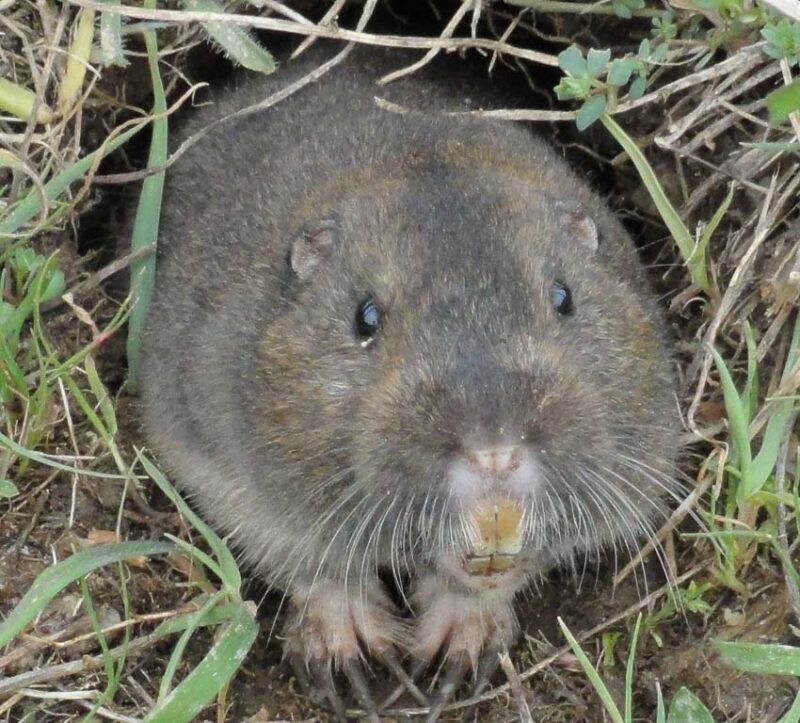
Repellents and deterrents are another natural approach to getting rid of gophers that don’t harm them. Use repellents and deterrents in combination with gopher fences and barriers to discourage them further.
Repellent Plants
Here is a list of the most effective plants for repelling gophers:
- Gopher spurge, also commonly known as mole plant (Euphorbia lathyris)
- Lavender
- Marigolds
- Basil
- Onion
- Garlic
- Catnip
- Rosemary
- Daffodils
Plant these around the edges of your vegetable garden and outside your gopher fence.
Castor Oil
Many pests don’t like castor oil, a common vegetable oil made from castor beans. Use the following recipe to make a homemade gopher-repellent spray:
- 3 tablespoons castor oil
- 1 tablespoon dish soap
- 1 gallon of water
Combine the castor oil and dish soap, then mix with the water in a one-gallon sprayer. Douse the entrances to gopher tunnels.
Castor oil pellets are also available and are easy to spread around. They are non-toxic to plants, pets, and humans.
Garlic Stakes
Gophers, along with many other pests, don’t like Allium family members, including garlic, onions, and chives. Garlic stakes are a ready-to-use product that you place in gopher tunnels, and they remain effective for about a year.
Peppermint Oil
Peppermint is another smell that many pests don’t like, so buying this essential oil in bulk is a good idea to repel many kinds of pests. Simply add it to water with a little dish soap and spray it around areas where gophers are active.
Natural Predators
Encourage natural predators like owls and hawks by providing habitat for them. Build owl houses and set up high rails above your garden for perches. It also helps to install a large bird bath and a bird feeder to attract more prey for them.
Gopher Repellent
Store-bought gopher repellents are widely available. They are non-toxic and safe for wildlife, pets, and children. The best gopher repellents are made with ingredients like castor oil and Fuller’s Earth.
Noise
Devices that create noise, such as windchimes, radios, and ultrasonic devices , are not generally effective alone, but they are recommended as part of an integrated pest management strategy.
Vibrations
Rototillers are an effective gopher control strategy because they create a lot of noise and vibrate the ground. You can also use solar-powered vibrating gopher spikes or pinwheels.
Effective Techniques for Gopher Control
If natural deterrents and repellents aren’t effective, you may need to take further measures on how to get rid of gophers in your yard. Learn more about gopher trapping and explore the effectiveness of flooding and watering methods.
Gopher Trapping: How to Set Traps
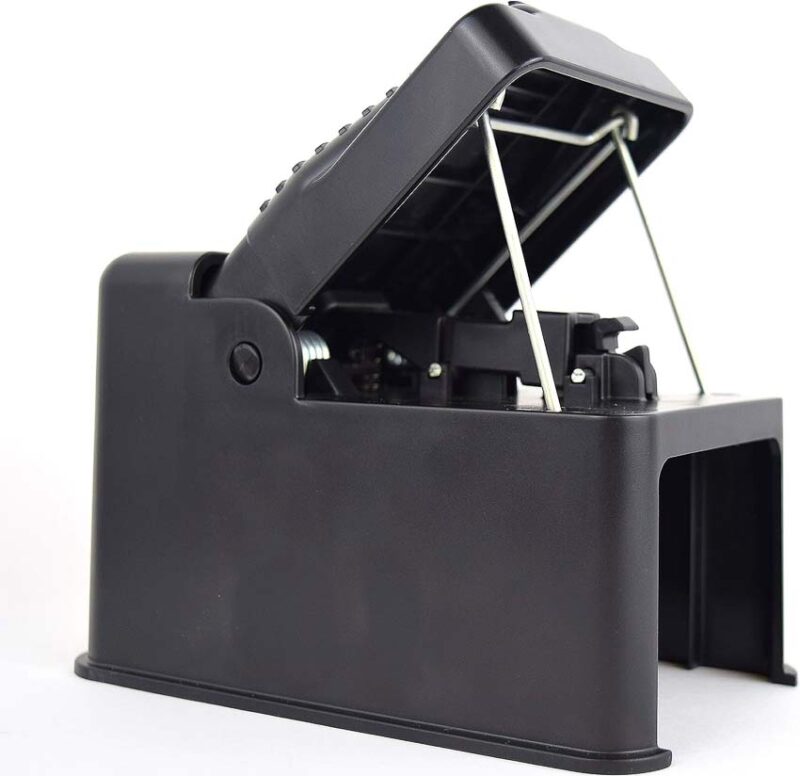
The most humane method of trapping gophers is to use a live trap and relocate them. Close all entrances and exits except one, and place the live gopher trap over the top of the hole. Use some vegetables or peanut butter as bait to lure them in.
Killing gophers quickly is arguably more humane than trapping them in a live trap and relocating them. The best gopher traps kill gophers instantly. Use them in pairs because you don’t know where the gopher will be coming from when you open up a tunnel.
Gopher traps are easy to set, and they are similar to mouse traps. Many people attach them to a piece of light chain or wire staked into the ground, so it’s easy to pull them out of the dirt once they are sprung.
Flooding and Watering Methods
Flooding gophers out is another method you can try, but its effectiveness is not guaranteed.
In some types of well-drained soil, it can be impossible to flush them out. Gophers dig deep holes, and the water will seep into the ground before it floods the high ground where the gopher is hiding.
Another problem with flooding out gophers is that moist ground is easier for gophers to dig in, so you can actually make your gopher problem worse. Avoid using this technique near the foundation of your home.
Preventive Measures to Discourage Gophers
Anything you can do to make your lawn and garden less alluring to gophers is a preventive measure. However, any time you have vegetation in your yard, it’s likely to appeal to a gopher, and they like the same plants that people like.
How to Modify Your Yard to Get Rid of Gophers
As part of your gopher strategy, there are several modifications you can make to your yard and garden.
- Feature gopher-repelling plants in your landscaping.
- Switch to raised beds for your garden and use gopher wire to keep them out.
- Grow potatoes and other vegetables in above-ground planters or potato bags.
- Use xeriscaping, which is less likely to attract gophers.
Plant Selection and Protection
Gophers love grass and clover, which can make it hard to keep them away from your yard. Once they are in, they have a smorgasbord of choices in your backyard oasis.
Gophers avoid plants that have strong smells and taste bitter. Many of these, including Artemesia, lamb’s ear, daylilies, and foxglove, are attractive landscaping plants. You can still plant the ones that gophers love, but be sure to use gopher cages to protect them.
FAQ: How to Get Rid of Gophers
Q1: Do Ultrasonic Repellers Work for Gopher Control?
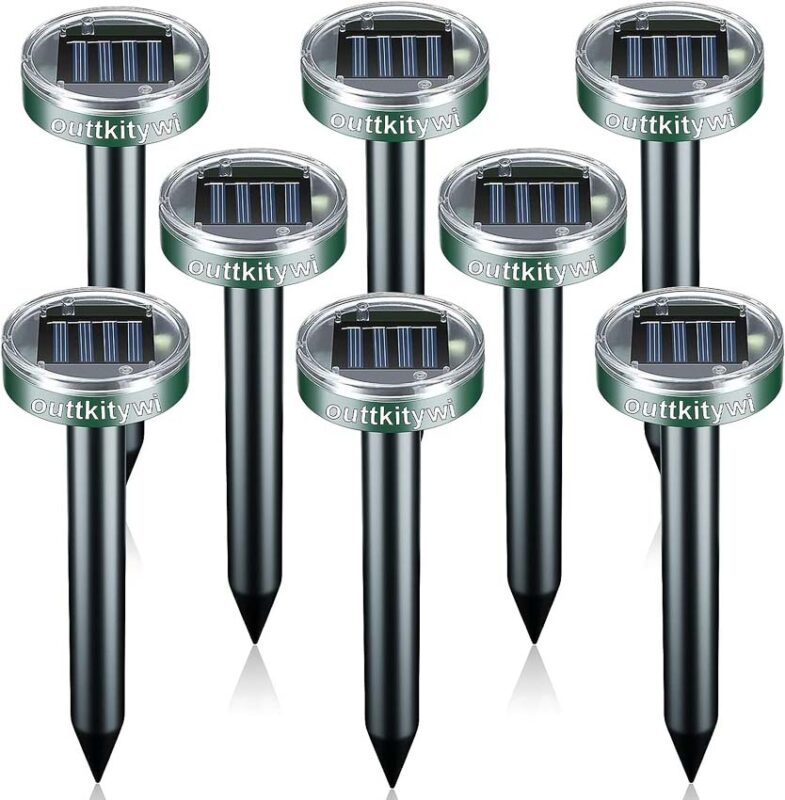
There is considerable controversy about the effectiveness of ultrasonic repellers . Some people swear by them, and others say they are worthless.
They may not be enough to drive gophers away, but they work well as part of an integrated approach. Ultrasonic devices are most effective in the first few weeks, but gophers become accustomed to them.
Q2: What Are the Best Bait Options for Gopher Traps?
Gophers are omnivores, and they like to eat all types of plants, including vegetables, grass, roots, nuts, and berries. When you’re baiting a trap for a gopher in your garden, try using peanut butter. When their food supply is limited in the spring, it’s much easier to bait them with vegetables like lettuce and carrots.
Q3: Can Gophers Damage Underground Pipes and Wiring?
Gophers are known to chew through irrigation pipes, utility lines, and wires. To prevent this, you can bury your underground utilities surrounded by about six inches of gravel.
Q4: How Long Does It Take to Get Rid of Gophers?
It may be impossible to get rid of gophers permanently. They are widespread, and when you get rid of one, another will move into its territory quickly. If you’re trapping gophers and haven’t caught one within 48 hours, move your trap to a new location.
Q5: Are Gophers Dangerous to Humans?
While gophers don’t present direct threats to humans, they can carry diseases like rabies. They are also host to parasites like ticks and fleas, which carry numerous diseases that can be transmitted to humans.
Have groundhogs, too? Learn how to get rid of them effectively!



